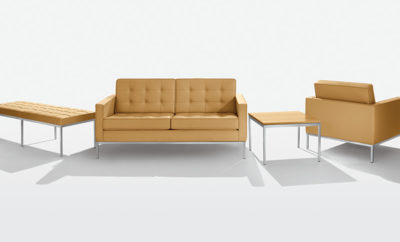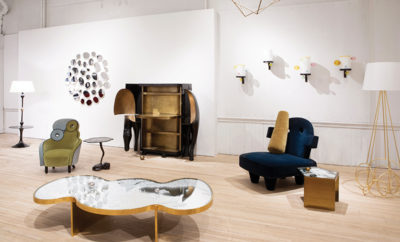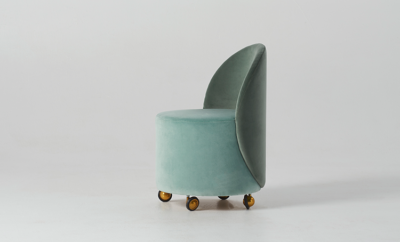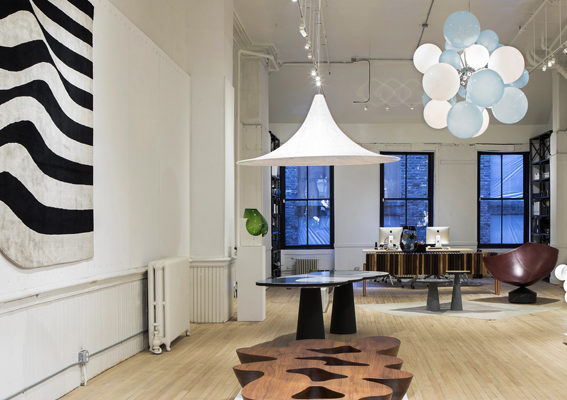 ALL IMAGES COURTESY OF TWENTY FIRST GALLERY; COSTAS PICADAS PHOTO.
ALL IMAGES COURTESY OF TWENTY FIRST GALLERY; COSTAS PICADAS PHOTO.
Exhibition
Emmanuel Babled Inaugurates Twenty First Gallery’s New Tribeca Space
Twenty First Gallery, a fresh addition to the circuit of Tribeca galleries—but not to New York’s design scene—has opened at 76 Franklin Street with an inaugural exhibition of work by the contemporary French designer Emannuel Babled. Renaud Vuaillat began Twenty First Gallery in 2006, exhibiting design mise-en-scene in a Chelsea townhouse. However, after twelve years, the gallery needed to expand to suit its growing roster of designers, resulting in its move to a ground-floor loft. Twenty First Gallery’s new downtown space in a historical cast-iron building is both classic and contemporary, the perfect backdrop for Emmanuel Babled: Immersion, a showcase of Babled’s work that blends traditional materials and craft with modern technology.

An installation view of Immersion at Twenty First Gallery.
Babled began his career as a designer in Paris before founding his studio in Milan in 1992 where he worked for eighteen years. Now based in Lisbon, Babled continues to expand his oeuvre of unique pieces for luxury manufacturers, such as Venini and Baccarat, as well as industrial products, furniture, and lighting for clients like Iittala and Waterford Crystal. As a whole, Babled’s works express a dual identity of the industrial and bespoke through his interest in combining modern manufacturing processes with craft and material heritage. “Technology is a medium, not an end,” says Babled, who sees CAD as a quality that can be physically manifested in an object, equal to its physical makeup.
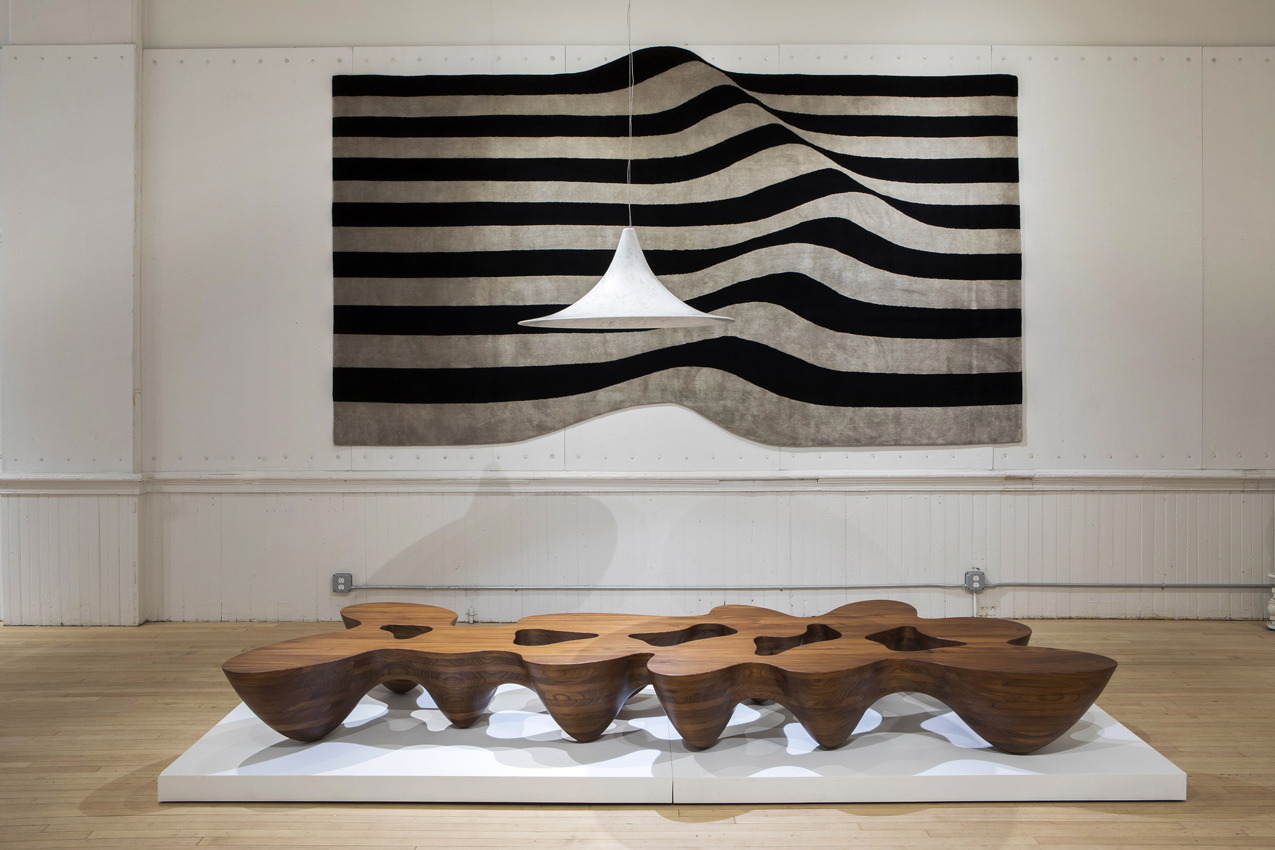
A Supernova light is installed above a wooden Quark table. Behind is a hand-knotted rug designed by Babled.
His perfectly balanced Supernova lights, for example, are made from Cararra marble that is cut with CNC. The suspended lamps are impossibly thin, belying their actual weight of about 44 pounds, an effect made possible through CAD. Although he pushes the limits of materiality with technology, Babled also recognizes a computer’s boundaries: each lamp is delicately finished by hand.
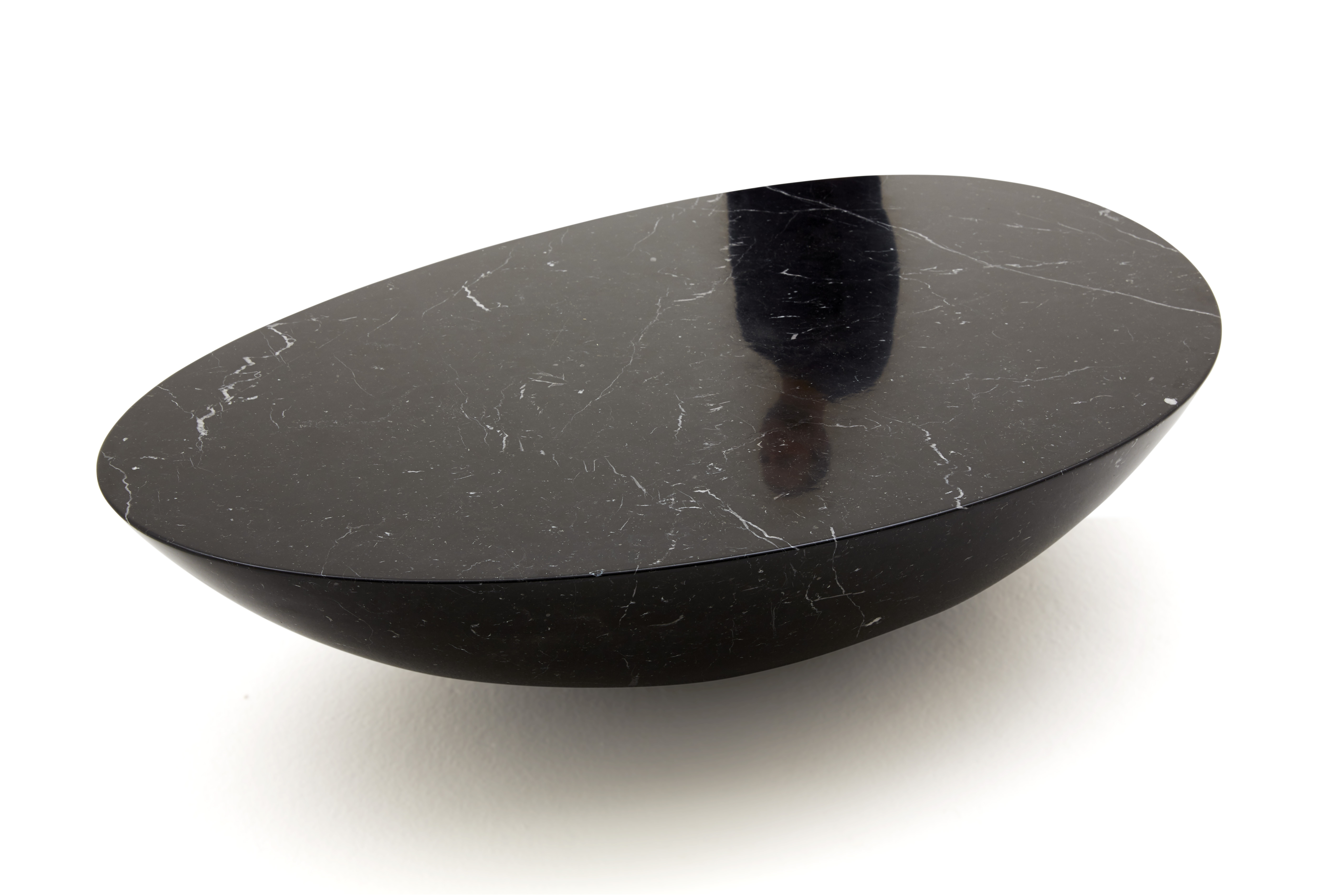
Babled’s Librastone tabel.
Babled’s low, Librastone table is also designed in CAD using algorithms that ensure no matter how the piece is tilted, it will always return to a perfectly flat, horizontal surface. “Gravity is our tool,” explains Babled, calling attention to his exploration of physics through design. Emphasizing Babled’s interest in localities, the table is made from a single piece of Nero Marquina, a rich, black marble specific to the Basque region north of Spain.
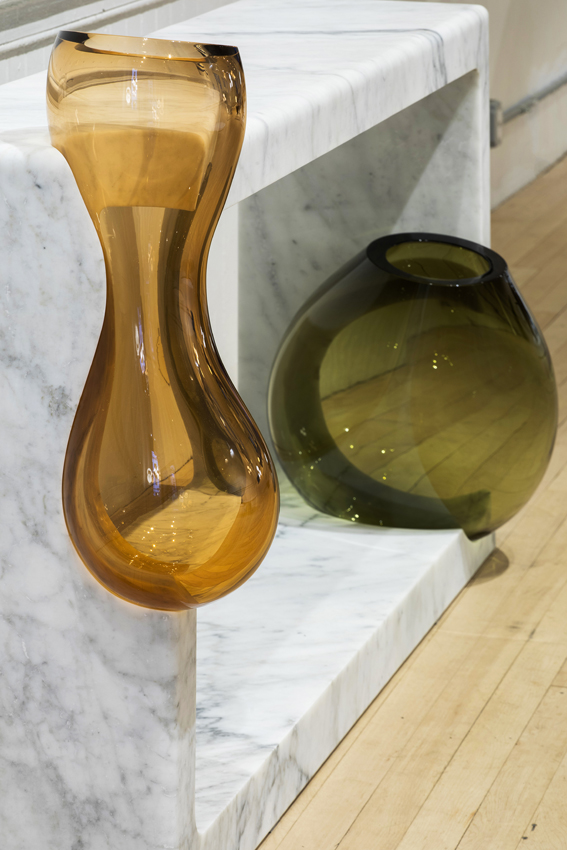
Detail of one of Babled’s Osmosi tables shows the careful fitting between glass and marble.
Best presenting Babled’s integrative design approach are his glass and stone Osmosi tables. The glass elements are hand-blown at the renowned Venini glass workshop in Murano and 3D scanned. Their negative shape is then digitally designed into the rectilinear tables made from classic Italian Carrara marble, which are milled by CNC. When the two pieces are assembled, the glass elements fit precisely into the frame. The Osmosi tables represent the quintessential combination of Babled’s mastery of technology and traditional craft.
Just as Babled considers the human interaction with his work, Vuaillat sees his gallery’s new location as a space for people, where he can better serve his designers and introduce their work to visitors. With its place in Tribeca, Twenty First Gallery asserts itself as a force in the New York design scene, taking on the role as the city’s premier showcase of contemporary French design.
Emmanuel Babled: Immersion is on view at Twenty First Gallery until November 9.


